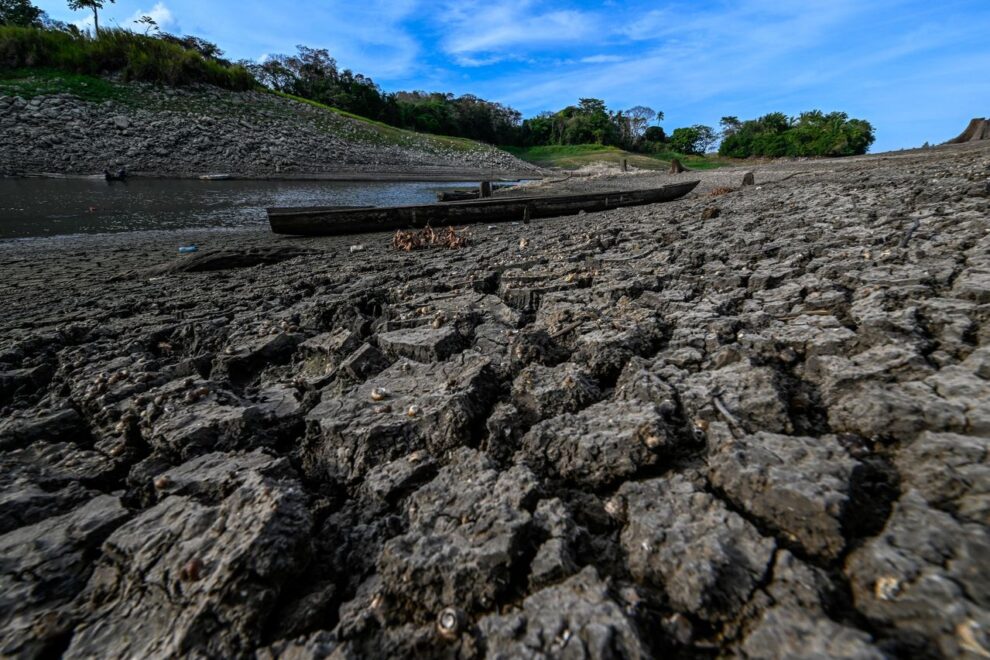About 40 percent of all U.S. container traffic goes through the Panama Canal. But right now, that traffic is backing up due to a severe drought in the region. As OL USA CEO and President Alan Baer tells Yahoo Finance Live though, it’s not just that traffic is slowed down, but the ships that are going through the locks need to be carrying lighter loads. “The bigger supply chain impact is the heavy cargo that some of the U.S. importers and exporters want to load is now being reduced and the ocean carriers are limiting container weight,” Baer says.
Video Transcript
– The Panama Canal, one of the great engineering feats in history, is currently experiencing a major traffic jam. Around 150 vessels are waiting to cross but a severe drought means they’re going to have to wait. The critical trade path ships $270 billion in cargo a year. That is 40% of all US container traffic.
Fresh water is needed to raise vessels traveling through the locks, much of which comes from the nearby Gatun Lake. The reservoir’s water levels are at a four-year low. The problem, that water isn’t just needed to raise ships, it also needs to flow to taps in Panama City.
Joining us now is Alan Baer, OL USA CEO. Alan, I’ve learned more about the Panama Canal in the past day than I ever knew. I did not know about the locks. I didn’t know that they gathered the brought from fresh water in order to operate the locks. How long has this been going on is it a structural issue? And is anything being done to try to address it?
ALAN BAER: Well, it’s– and thanks for having me this morning. It’s more a recent phenomenon. Generally, historically, there’s been enough rainfall that has filled the lake that the vessels transit. The locks, as you highlighted, are on both sides on the Pacific side and the Gulf of Mexico side. In between, the ships navigate across the lake. That is now shallower or more shallow than it’s been historically.
And that’s where the problem is coming up. The ships can’t load as heavy as they want. The number of ships that can navigate across the lake has been reduced, creating the traffic jam you referred to. But the bigger supply chain impact is the heavy cargo that some of the US importers and exporters want to load is now being reduced and the ocean carriers are limiting container weight. And so you have a lot of products that move into the US that are impacted by those weights restrictions.
– And so perhaps it’s good to have a reminder of why the Panama Canal is the chosen route.
ALAN BAER: Well, you have ships that are going to transit– so you can reach the US East Coast from multiple sort of two directions, if you will, coming out of Asia. One is the Panama Canal. That turns out to be the shortest route when you think of business coming out of North Asia, China, Taiwan. The fastest route both into the Gulf of Mexico ports, Houston, New Orleans, and then to the US East Coast is via the Panama Canal.
The alternative route that is now being explored by a lot of importers as these delays start to mount will be coming via the Suez. That has generally been a decent alternative if you’re coming out of the ASEAN region if you’re importing Vietnam, Thailand, Malaysia, Indonesia, Singapore, India. But there is a– as you pointed out in the opening segment, there’s a tremendous amount of cargo that transits the Panama Canal versus going around the bottom of South America, for example. That would be far more costly.
– And what about– how much of this can be absorbed by the West Coast of the US ports and then transferred across the country?
ALAN BAER: I think you’ll see a shift in business now over the next few weeks as people don’t want to necessarily wait for seven to 21 days of delay with the congestion. But there’s a lot of merchandise that doesn’t necessarily want to absorb at the same time the increased cost.
So if you’re a importer of flooring in the South Atlantic and feeding into the housing market there, to bring that cargo, let’s say, to LA and rail it across to Atlanta or Charleston, Savannah, it’s a tremendous increase for the importer that they haven’t necessarily budgeted for at this moment. And that would be then feed into the cost of home improvement or a new home being built because your transportation costs could go up by 30%, 40%, 50% at that point.
– Which companies are we talking about this impacting the most where they’ve got cargo on some of these key vessels?
ALAN BAER: Well, everybody’s impacted. So whether you’re bringing in light cargo or you’re bringing– anything that’s moving from Asia at the moment to the US East coast is impacted by these delays. So you would expect a transit time, let’s say, Shanghai to New York of 25 to 30 days. You could now be facing 40 to 50 days.
Coupled with that, though, is if I’m importing nails and screws, for example, or I’m importing flooring– I think it’s a great example– not only am I impacted by the longer transit, my cargo may not be loaded. The carriers are restricting what cargo they can put on the ship as it departs Asia simply because of the weight restriction going through the Panama Canal or through the lake at the moment. And that means I could be shut out for two, three, four weeks before the carrier has the right mix of cargo to load my heavy containers along with the light ones that they’re loading at the same time.
– Alan, what effect does all of this having on cost of goods? During the pandemic in particular, we all became sort of logistics and shipping nerds to a degree and learned more about all of this than we ever knew or needed to know. Now that has sort of quieted down. We’re looking at disinflation in the United States. But is this something that’s sort of providing a floor under that, that we can’t see prices fall that much while this kind of pressure is still on?
ALAN BAER: Well, yeah. I mean the anomaly that we saw in late ’21 and on into ’22 was something I’ve never seen ever in my history of doing this. Those have– the prices have normalized back to what we saw in 2019 and are sitting, to your point, at a floor level. I don’t think they’re going to go down any further or further now as a result of some of the congestion. The carriers are reducing the number of ships they’re operating to also facilitate better lifting and loading capacity.
I don’t know that it’ll have a major impact on inflation in a sense. These are marginal costs. Given the wide range of inflation– I’m certainly not an expert to talk to that, but I don’t think overall you’re going to see too much of it other than a sort of a $3,000 rate may go to $3,500, but we’re certainly not going all the way back to $25,000 that we experienced coming out of the pandemic.
Source: Yahoo News









